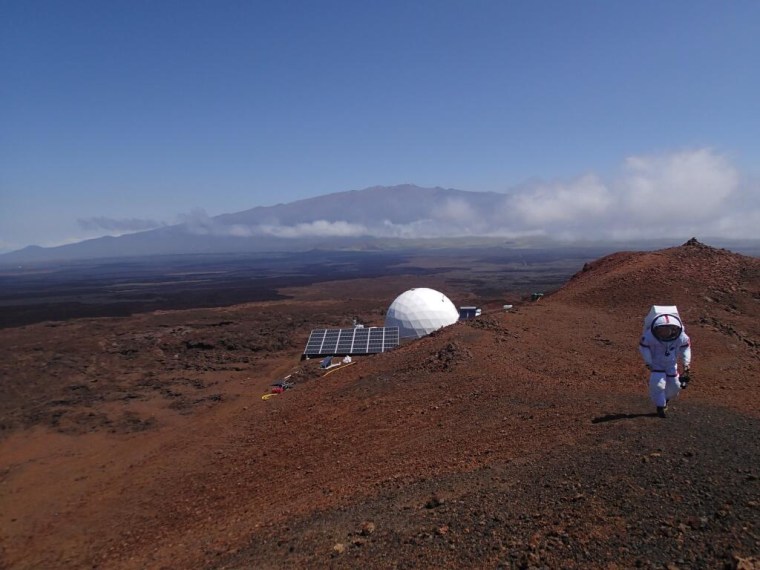On Friday, six scientists left the comforts of civilization, set to be gone for an entire year. Their mission will simulate what it might be like for astronauts journeying to Mars.
In the confines of a 36-foot-wide and 20-foot-high solar-powered dome in a remote location on the island of Hawaii, the six team members will have to live together for 365 days. They will have no face-to-face contact with humans outside of the dome. This is the fourth and longest such mission carried out by the Space Exploration Analog and Simulation program.

"We hope that this upcoming mission will build on our current understanding of the social and psychological factors involved in long-duration space exploration," Kim Binsted, principal investigator for HI-SEAS, said in a statement from the University of Hawaii.
During previous trips, the crewmembers were allowed to leave the dome in spacesuits, occasionally engaging in outdoor activities like golfing, but mostly to do research in the local environment, the way members of a real Mars crew would.
The crew consists of three women and three men; four of the crew are American, one is French and one is German. They have a yearlong supply of food and water. The cuisine, which the team must be able to store for months at a time, is similar to what astronauts eat.
The HI-SEAS habitat features a downstairs area with a lab, a kitchen, a common workspace, an exercise area, a dining room and a bathroom. Upstairs are six small bedrooms and a bathroom.
Researchers will monitor the six crewmembers throughout the mission via cameras, body-movement trackers and other methods. Back in the real world, the researchers will gather data on "a wide range of cognitive, social and emotional factors that may impact team performance," according to the statement.
This is a condensed version of a report from Space.com. Read the full report. Follow Calla Cofield @callacofield. Follow Space.com @Spacedotcom, Facebook and Google+.